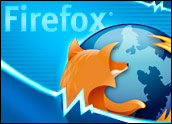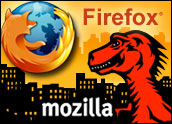
Windows has overcome Unix to claim the server sales crown for the first time, according to IDC’s latest Worldwide Quarterly Server Tracker.
The Windows server market continued to show solid growth, with factory revenues increasing by 4.7 percent year over year. Overall, Windows servers accounted for US$4.9 billion in the fourth quarter of 2005, representing 33.6 percent of quarterly server market revenue.
“IDC continues to see end users utilizing a mix of operating systems in their infrastructures,” said Jean S. Bozman, vice president of worldwide server research at IDC. “Each platform offers its own advantages in terms of workloads and customer preferences, and there is substantial overlap in terms of ISV applications that run on many of these server platforms.”
Room for Competition
For all of 2005, Windows server revenues were $17.7 billion, which means that for the first time, the Windows server segment modestly exceeded spending for Unix servers. Customer deployments of more fully configured Windows servers in support of scalable enterprise workloads and servervirtualization projects drove the increase.
It is no surprise that Windows has taken the lead. From a volume standpoint, the x86 market continued to experience strong growth, with revenue of $6.8 billion worldwide for the fourth quarter of 2005. Factory revenue for x86 servers grew 6.7 percent, while unit shipments grew 13.7 percent to 1.8 million servers.
“Windows is the OS of choice in the x86 market,” PundIT Principal Analyst Charles King told LinuxInsider. “What’s interesting is the relative lack of an enthusiastic market uptake of Itanium servers has also impacted Windows. If Itanium had come on as strong as Intel anticipated, Microsoft would have achieved this lead before now.”
Unix Still Strong
Although the trend is toward volume systems, Bozman does not believe that any one platform will be in a position to force another platform out of the marketplace for many years to come.
Unix servers experienced a 5.9 percent decline in factory revenue year over year to $5 billion for the quarter with worldwide Unix revenues for the same period representing 34.3 percent of overall quarterly factory revenue.
For all of 2005, Unix server revenues were $17.5 billion, moving the platform from sole possession of first place, from an operating system perspective, for the first time in more than a decade.
What About Linux?
Meanwhile, Linux servers generated $1.6 billion in quarterly revenue, the 14th consecutive quarter of double-digit growth, with year-over-year revenue growth of 20.8 percent.
For the full year, Linux server revenues were $5.7 billion, putting it in third place for the first time, from an operating system perspective, as customers continued to expand the role of Linux servers into an increasingly wider array of commercial and technical workloads, according to IDC.
“Linux supporters assumed that Linux would bump Microsoft,” King noted. “What happened instead was Linux has tended to take market share away from Unix more than it has from Windows in the last few years.”
Declining Worldwide Revenues
These figures come against a backdrop of declining factory revenue in the worldwide server market. Revenue declined 0.2 percent year over year to $14.5 billion in the fourth quarter of 2005, according to IDC.
This was the first year-over-year quarterly decline in revenue since the first quarter of 2003, as year-over-year quarterly comparisons become more difficult. Worldwide, server unit shipment growth slowed modestly to 10.6 percent in the fourth quarter of 2005 when compared with the year-ago period.
Volume systems, on the other hand, grew 7.3 percent year over year, and the segment continued to be the catalyst for growth for the server market overall, gaining favor with SMB and enterprise customers alike.
After four consecutive quarterly increases, revenue for midrange enterprise servers declined 11.5 percent year over year and the high-end enterprise server market showed a 1.7 percent decline year over year, the fifth consecutive quarter of declining revenue for high-end enterprise servers.
“The volume server market continues to evolve as richer server configurations driven by both scale-out cluster implementations and scale-up server virtualization initiatives continue to drive increased customer spending,” said Matthew Eastwood, program vice president of IDC’s worldwide server group.
Server Market Evolution
However, even in the volume segment, Eastwood said the quarterly unit shipment growth of 11.5 percent was two-thirds the year-over-year unit growth rate observed in the fourth quarter of 2005. This, he noted, illustrates a transition toward more richly configured systems in the market.
“This evolution is driven by IT managers’ increased desire to consolidate and virtualize their server infrastructures as they seek to maintain balanced and manageable IT growth in the future,” Eastwood remarked.
Vendor Analysis
IBM retained the No. 1 spot in the worldwide server systems market with 38.4 percent market share in factory revenue, growing its revenue by 0.8 percent when compared to the same quarter one year ago. Hewlett-Packard continued to hold the No. 2 spot in terms of factory revenue with 26.8 percent share,growing revenue 3.8 percent compared to the fourth quarter of 2004 and gaining 1 point of market share overall.
Dell maintained third place with 9.6 percent factory revenue market share in the fourth quarter of 2005. Dell experienced 7.3 percent revenue growth compared with the fourth quarter of 2004, while fourth place Sun experienced a year-over-year revenue decline of 10.9 percent in fourth quarter of 2005to 8.2 percent market share.
Fujitsu/Fujitsu-Siemens earned a fifth place standing in terms of factory revenue with 4.3 percent market share. The Fujitsu Group of companies saw a 10.9 percent factory revenue decline year over year.
In terms of unit shipments, HP maintained the number 1 position worldwide with 30.2 percent server shipment share, growing shipments 8.8 percent year over year. Dell maintained the number 2 spot in terms of worldwide server shipments with 23.3 percent share, up from 21.3 percent.
Dual Core Growing
The number of AMD and Intel-powered dual core systems each grew by more than double on a quarter-over-quarter basis, according to Jed Scaramella, research analyst, worldwide server research.
“Given customers’ intense focus on performance as well as power, heat and cooling issues in their datacenters, the move to incorporating dual core processors is a natural move as users look to lower costs and increase computing capacity,” Scaramella said.




















































